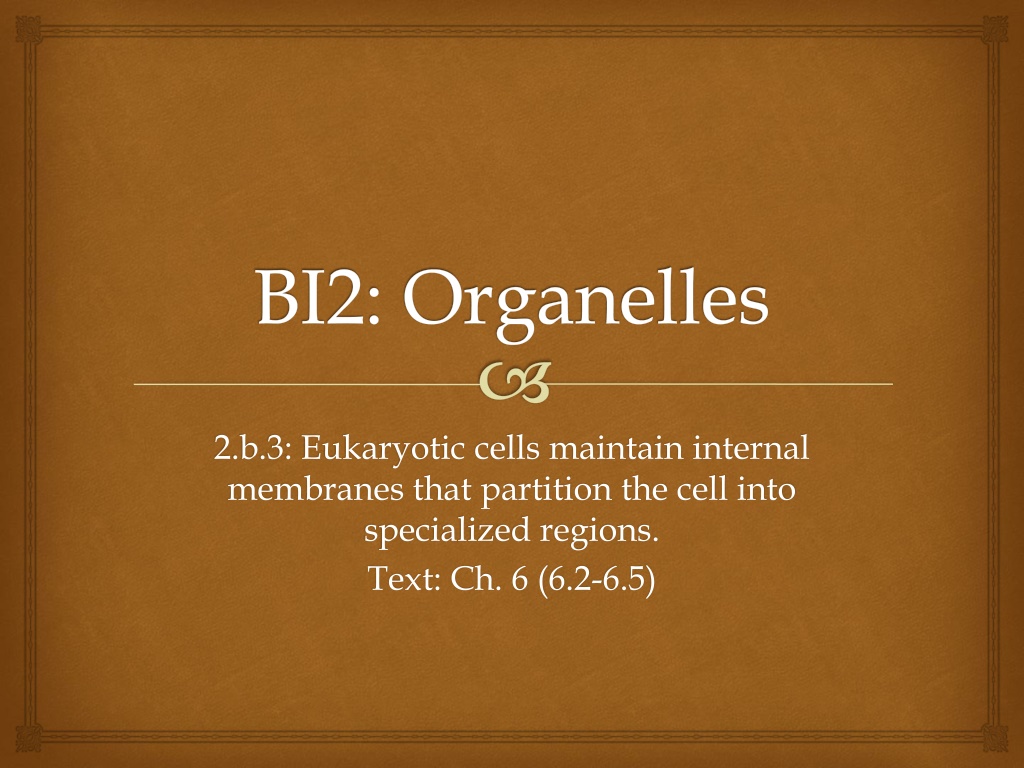
Understanding Eukaryotic Cell Organelles and Functions
Explore the world of eukaryotic cells and their internal membranes that compartmentalize structures for specialized functions. Learn about the fundamental components like the cell membrane, cytoplasm, ribosomes, and DNA. Delve into the role of ribosomes in protein synthesis and the interconnected endomembrane system comprising the nuclear membrane, ER, Golgi apparatus, lysosomes, and plasma membrane. Discover the functions of smooth and rough ER, Golgi complex, and how these organelles work together to maintain cellular homeostasis and perform essential metabolic processes.
Download Presentation

Please find below an Image/Link to download the presentation.
The content on the website is provided AS IS for your information and personal use only. It may not be sold, licensed, or shared on other websites without obtaining consent from the author. If you encounter any issues during the download, it is possible that the publisher has removed the file from their server.
You are allowed to download the files provided on this website for personal or commercial use, subject to the condition that they are used lawfully. All files are the property of their respective owners.
The content on the website is provided AS IS for your information and personal use only. It may not be sold, licensed, or shared on other websites without obtaining consent from the author.
E N D
Presentation Transcript
BI2: Organelles 2.b.3: Eukaryotic cells maintain internal membranes that partition the cell into specialized regions. Text: Ch. 6 (6.2-6.5)
The basic unit of life is the cell. There are two basic types of cells: prokaryotes and eukaryotes. Viruses are much smaller than cells, and do not share similar structures.
While viruses are not considered by many to be alive, they interact with life on many different levels, and have influenced the evolution of life.
All cells have the following basic structures: Cell (plasma) membrane Cytoplasm Ribosomes DNA
DNA in prokaryotes and Eukaryotes (and in plants, in the chloroplasts)
Ribosomes are composed of two subunits of rRNA and protein (no membrane surrounds them). Ribosomes are used for protein synthesis. Ribosomes: In cytoplasm (free) Make proteins that remain in the cytosol. Attached to ER (rough ER) Make proteins that are used within the membrane or expelled from the cell.
ENDOMEMBRANE SYSTEM: Internal membranes compartmentalize the cell for various functions. The interconnected inner membranes increase surface area for metabolic processes. Includes: nuclear membrane, ER, Golgi, Vesicles, lysosomes, and plasma membrane
Smooth ER: Chemical synthesis and modification of small molecules, lipid and steroid synthesis. Also, drug detox, hydrolysis of glycogen to glucose Rough ER: Ribosomes attached; makes proteins for transport (export) and for the membrane
Golgi Complex Packages, sorts and modifies molecules received on cis side and released on trans side in vesicles. Cells that export (secrete) a lot of molecules have many golgi complexes. Lysosomes are one type of vesicle made by the golgi
VESICLES and VACUOLES Lysosomes: Made by golgi; filled with hydolytic enzymes that digest macromolecules. Important in apoptosis and autophagy Vacuoles include: Food vacuole Contractile vacuole (protists) Cental vacuole (plants) Peroxisomes: Form H2O2 used for oxidative purposes
MITOCHONDRIA AND CHLOROPLASTS These have their own DNA (plasmids), own ribosomes, and a double plasma membrane. Mitochondria are the site of aerobic respiration Chloroplasts are the site of photosynthesis
